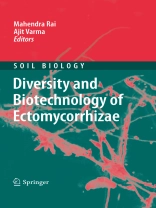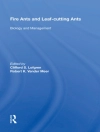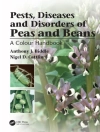Ectomycorrhizal fungi play multifunctional roles during symbioses with higher plants. They can serve as bioprotectors, biofertilizers, bioremediators and stress indicators. Further, they are the true “mycoindicators” of forest ecosystems, where an enormous diversity of ectomycorrhizal fungi can be found. Some ectomycorrhizal fungi also produce edible sporocarps, i.e., fruiting bodies, which are important for the food industry. Ectomycorrhizal fungi also produce various metal chelating molecules, which are of remarkable biotechnological significance and which also secrete useful secondary metabolites. Molecular approaches are required for the identification and differentiation of fungi forming symbioses with higher plants, while molecular tools are important to understand how genes are expressed during symbiosis with higher plants. Students, researchers and teachers of botany, mycology, microbiology, forestry, and biotechnology will find a valuable source of information in this Soil Biology volume.
Tabla de materias
The importance of ectomycorrhizas for the growth of dipterocarps and the efficacy of ectomycorrhizal inoculation schemes.- The ectomycorrhizal symbiosis in South America: Morphology, colonization and diversity.- Ectomycorrhizal inoculum and inoculation techniques.- Systematic and ecology of tropical ectomycorrhizal fungi using molecular approaches.- The molecular ectomycorrhizal fungus essence in association: a review of differentially expressed fungal genes during symbiosis formation.- Agrobacterium tumefaciens-mediated transformation of ectomycorrhizal fungi.- Biotechnological processes used in controlled ectomycorrhizatio practices.- Signalling in ectomycorrhizal symbiosis establishment.- RNA silencing in ectomycorrhizal fungi.- Ectomycoremediation: An eco-friendly technique for the remediation of polluted sites? – Metal elements and the diversity and function of ectomycorrhizal communities.- A conceptual framework for up-scaling ecological processes and application to ectomycorrhizal fungi.- Mycobioindication of stress in forest ecosystems.- Effect of pesticides on the growth of ectomycorrhizal fungi and ectomycorrhiza formation.- Metal- chelating agents from ectomycorrhizal fungi and their biotechnological potential.- Ectomycorrhiza and secondary metabolites.- C:N interactions and the cost: benefit balance in ectomycorrhizae.- Ectomycorrhizal interaction between Cantharellus and Dendrocalamus.- Edible ectomycorrhizal fungi: Cultivation, conservation and applications.












